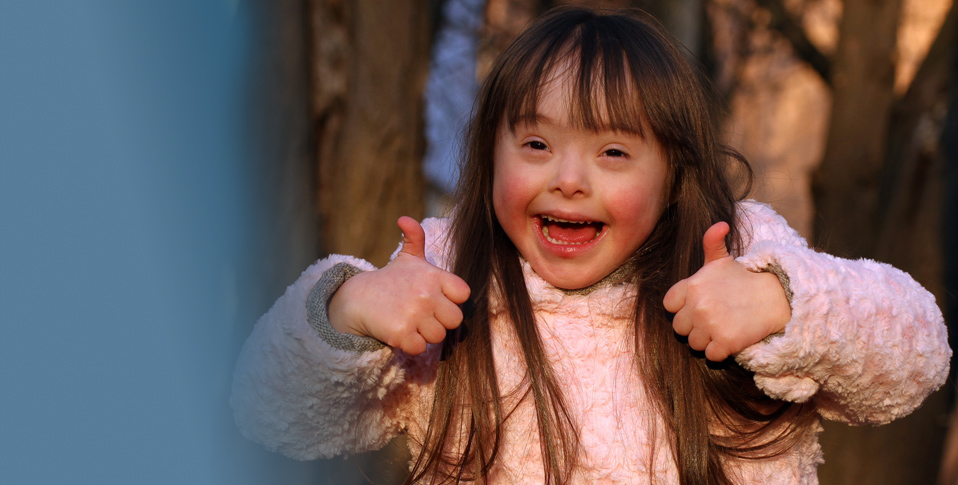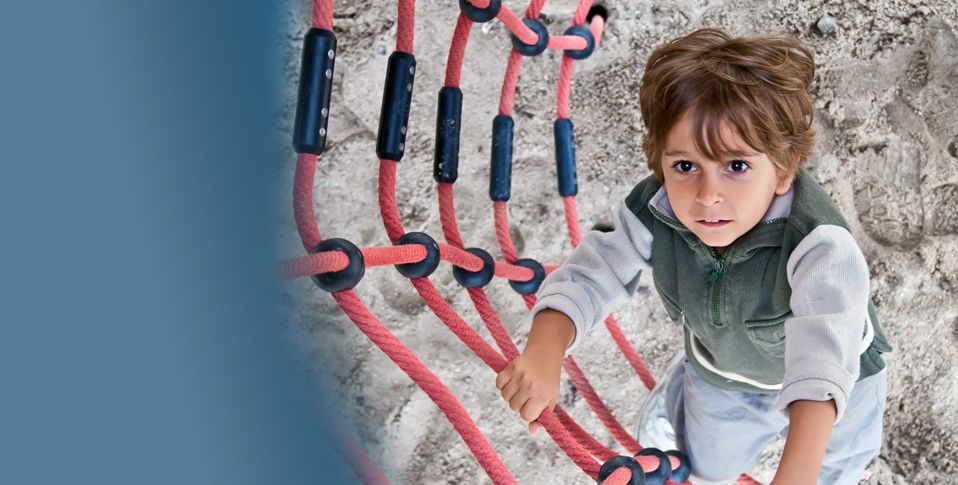Publications
Books
Colvin, Geoff. (2007) 7 Steps for Developing a Proactive Schoolwide Discipline Plan: A guide for Principals and Leadership Teams. Thousand Oaks, California:Corwin Press.
Colvin, Geoff. (2007) Managing Non-Compliance and Defiance in the Classroom: A road map for teachers, specialists and behavior support teams. Thousand Oaks, California: Corwin Press.
Crone, Deanne; Horner, Robert H; Hawken, Leanne S. (2010) Responding to Problem Behavior in Schools: The Behavior Education Program Second Edition New York: The Guilford Press
Dunlap, Glen; Iovannone, Rose; Kincaid, Donald; Wilson, Kelly; Christiansen, Kathy; Strain, Phillip, & English, Carie. (2009) Prevent-Teach-Reinforce: The School-based Modal of Individualized Positive Behavior Support. Baltimore Maryland: Brookes Publishing
Lindsey, Delores; Martinez, Richard; Lindsey, Randall. (2007) Culturally Proficient Coaching. Thousand Oaks, Califonria: Corwin Press.
Lindsey,Randall; Graham, Stephanie; Westphal, Chris; Jew, Cynthia. (2008) Cultural Proficient Inquiry. Thousand Oaks, California: Corwin Press.
Patterson, Grenny, Maxfield, McMillan, Switzler. (2008) The Influencer: The Power to Change Anything. New York: Mc Graw Hill
Pink, Daniel. (2009) Drive: A Whole New Mind. New York: Riverside Drive, The Penguin Group.
Saylor, Wayne; Dunlap, Glenn; Sugai, George. (2008) Handbook of Positive Behavior Support.New York:Springer
Terrell, Raymond; Lindsey, Randall. (2009) Culturally Proficient Leadership. Thousand Oaks, California: Corwin Press.
DVD's
Colvin, Geoff. (2007) Defusing Anger and Aggression; Managing Threats; Managing Non-compliance.
Hawken, Leanne; Pettersson Holie; Mootz, Julie; Anderson, Carol. (2005) The Behavior Education Program: A check-in, Check-out Intervention for Students at Risk. New York: Guilford Press
Liaupsin, Carl; Scott, Terry; Nelson, Michael.(2006) Functional Behavioral Assessment and Intervention Planning: A simplified team process. Sopris West.
Smith, Stephen & Sprague, Jeffery. Systematic Supervision for Elementary, Middle and High School. Eugene Oregon: Iris Educational Media (IrisEd)
Research
Nelson, C. M., Sugai, G., & Smith, C. (2005). Positive behavior support offered in juvenile
corrections. Counterpoint, 1, 6-7.
Bradshaw, C. P., Brown, J. S., & Hamilton, S. F. (2006). Applying positive youth development
and life-course research to the treatment of adolescent involved with judicial system.
Journal of Addictions and Offender.
Horner, R. H., & Ross, S. W. (2009). Bully prevention in positive behavior support. Journal of
Applied Behavior Analysis, 42, 747-759.
Blonigen, B. A., Harbaugh, W. T., Singell, L. D., Horner, R. H., Irvin L. K., and Smolkowski,
K. S. (2008). Application of economic analysis to school-wide positive behavior support
SWPBS programs. Journal of Positive Behavior Interventions, 10, 1.
Kaff, M. S., Milham, M., & Zabel, R. H. (2007). Revisiting cost-benefit relationships of
behavior management strategies: What special educators say about usefulness,
intensity, and effectiveness, Preventing School Failure, 51, 2.
Allensworth, E., Johnson, D. W., & Steinberg, M. P. (2011). Student and teacher safety in
Chicago public schools. The roles of community context and school social organization.
Consortium on Chicago School Research at the University of Chicago Urban Institute.
Bradshaw, C. P., Garbarino, J., Ghandaur, L. A., & Rodgers, C. R. R. (2009). Social-cognitive
mediators of the association between community violence exposure and aggressive
behavior. School Psychology Quarterly, 24, 199-210.
Artiles, A. J., Kozleski, E. B., Ortiz, A., Osher, D., & Trent, S. C. (2010). Justifying and
explaining disproportionality 1968-1008: A critique of underlying views of culture.
Council for Exceptional Children, 76, 3, 279-299.
Christle, C., Jolivette, K., Nelson, C. M. (2004). School characteristics related to the use of
suspension. Education and Treatment of Children, 27, 4.
Chung, C. G., Horner, R. H., May, S. L., Rausch, M. K., Skiba, R. J., & Tobin, T. (2008). Race
is not neutral: A natural investigation of African-American & Latino disproportionalit
in school discipline.
Goodman, J. F. (2007). School discipline, buy-in and belief. Ethics and Education, 2, 1, 3-23.
Marshall, M. L. (2002). Center for research on school safety school climate and classroom
management. Examining school climate: Defining factors and educational influences.
Smith, N. (2001). Global social cleansing: Post liberal revanchism and the export of zero
tolerance. Social Justice, 28, 3.
Braddock, D., Carr, E. D., Doolabh, A., Horner, R. H., Marquis, J. G., McAtee, M. L.,
ÖMcLaughlin, D. M. (1999). Positive behavior support for people with developmental
disabilities: A research synthesis. American Association of Mental Retardation.
Benedict, E. A., Horner, R. H. Squires, J. K. (2007). Assessment and implementation of positive
behavior support in preschools. Preschool Positive Behavior Support, 27, 3, 174-192.
Broyles, L., Fox, L., Hemmeter, M. L., & Jack, S. (2007). A program-wide model of positive
behavior support in early childhood settings. Journal of Early Intervention, 29, 4, 337-
355.
Lewis, T. S., Smith, S. C., & Stormont, M. A. Teacher implementation of pre-correction and
praise statements in head start classrooms as a component of a program-wide system of
positive behavior support. Journal of Behavior Education, 16, 280-290.
Beavans, K. B., Bradshaw, C. P., Brown, L. D., Leaf, P. J., & Reinke, W. M. (2008).
Implementation of school-wide positive behavioral interventions and support.
PBIS in elementary schools: Observations from a randomized trial. Education and
Treatment of Children, 31, 1.
Beavans, K. B., Bradshaw, C. P., Ialongo, N., Koth, C.W., & Leaf, P. J. (2008). The impact of
School-wide positive behavioral interventions and supports PBIS on the
organizational health of elementary schools. School Psychology Quarterly, 23, 4,
462-473.
Eber, L., Esperanza, J., Horner, R. H., Nakasato, J., Smolkowski, K., Sugai, G., &
Todd, A.W. (2009). Randomized, wait-list controlled effectiveness trial assessing
school-wide positive behavior support in elementary schools. Journal of Positive
Behavior Interventions, 11, 3, 133-144.
Albin, R. W., Bohanon, H., Buschbacher, P., Carr, E. C., Choi, J. H., Clarke, S., ÖDunlap, G.
(2010). A descriptive multiyear examination of positive behavior support. Behavioral
Disorders, 35, 4, 259-279.
Barrett, S. B., Bradshaw, C. P., & Lewis-Palmer, T. (2008). Maryland statewide PBISinitiative
systems, evaluation & next steps. Journal of Positive Behavior Interventions, 10, 2,
1-5-114.
Blum, C., & Cheney. (2009). The validity and reliability of the teacher knowledge and skills
survey for positive behavior support. Council for Exceptional Children, 32, 3, 239-256.
Childs, K. E., Cohen, R., & Kincaid. (2007). Measuring school-wide positive behavior
support implementation: Development and validation of the benchmarks of quality.
Journal of Positive Behavior Interventions, 9, 4, 203-213.
Childs, K. E., George, H. P., & Kinkaid, D. (2005). The revised school-wide PBS benchmarks
of quality (BoQ). Unpublished instrument, University of South Florida.
Childs, K. E., George, H. P., & Kincaid, D. (2010). Model for statewide evaluation of a
universal positive behavior support initiative, Journal of Positive Behavior
Interventions, 12, 4, 198-210.
Safran, S. P. (2006). Using the effective behavior supports survey to guide development
of school-wide positive behavior support. Journal of Positive Behavior Interventions, 8,
1, 3-9.
Spaulding, S., Tobin, T. J., & Vincent, C. (2010). A reexamination of the psychometric
Properties of the school-wide evaluation tool (SET). Journal of Positive Behavior
Intervention, 12, 3, 161-179.
Bates, J. M., Bradshaw, C. P., Calhoun, G. B., Glaser, B. A. (2006). Beliefs and practices of the
parents of violent and oppositional adolescents: An ecological perspective. The Journal
of Primary Prevention, 27, 3.
Bradshaw, C.P., & Garbarino, J. (2004). Social-cognition as a mediator of the influence of family
and community violence on adolescent development. Annals New York Academy of
Sciences, 1036, 85-105.
Choi, J. H., Griggs, P., Hall, T. P., Markey, P. J., Markey, V., McCart, A., Ö Sailor, W. (2007).
The effects of positive behavior support parent-training program on parent-child
relationships in culturally and linguistically diverse families. Multiple Voices for
Ethnically Diverse Exceptional Learning, 10, 191-210.
Functional Behavioral Assessment
Nelson, C. M., Scott, T. M., & Zabala, J. (2003). Functional behavior assessment training n
public schools: Facilitating systemic change. Journal of Positive Behavior Interventions,
5,4, 216-224.
Packenham, M., Reid, R., & Shute, R. (2004). A truncated functional behavioral assessment
procedure for children with disruptive classroom behaviors. Education & Treatment of
Children, 27, 1.
Anderson, C. M., Flannery, K. B., & Sugai. (2009). School-wide positive behavior support in
high school. Journal of Positive Behavior Interventions, 11, 3, 177-185.
Anderson-Harris, S., Bohanan, H., Carney, K. L., Culos, C., Fenning, P., Hicks, K. J., Ö
Sailor, W. (2006). School-wide application of positive behavior supports in an urban
high school: A case study. Journal of Positive Behavior Interventions, 8, 3, 131-145.
Dammert, L. & Malone, M. F. T. ( 2008). Does it take a village? Policing strategies and fear of
crime in Latin America. Latin America Politics & Society, 48, 4.
Barretto, A., Derby, K. M., Killu, K., & Weber, K. P. (2006). Behavior intervention planning
and implementation of positive behavior support plans. An examination of states
adherence to standards for practice. Journal of Positive Behavior Interventions, 8, 4,
195-200.
Bradshaw, C.P., Debnam, K., Koth, C.W., and Leaf P. (2009). Preliminary validation of the
implementation phases inventory for assessing fidelity of school-wide positive behavior
support.
Journal of Positive Behavior Behavior Interventions, 11, 3, 145-160.
Codding, R. S., Dunn, E. K., Feinberg, A. B., & Pace, G. M. (2005). Effects of immediate
performance feedback on implementation of behavior support. Journal of Applied
Behavior Analysis, 38.2, 205.
Connell, S. E., Duhan, G. J., Gatti, S. L., Koenig, J. L., Noell, G. H., Resetar, J. L., Ö Witt, J. C.
(2005). Treatment implementation following behavioral consultation in schools: A
comparison of three follow-up strategies. School Psychology Review, 34, 1, 87-106.
Ravensberg, V. H., & Tobin, T. J. (2004). IDEA 2004 final regulations: The reauthorized
functional behavioral assessment. Educational and Community Supports, College of
Education, University of Oregon.
Anton, B. S., Durlak, S. A., Sandler., & Weisz (2005). Promoting and protecting youth
Mental health through evidenced-based prevention treatment. American Psychologist, 60,
6, 628-648.
Beaudoin, K., Benner, G. J., & Knuth, R. (2006). Using positive behavior supports in EBD
settings. Academic Exchange.
Bradshaw, C. P., Brown, J. S., & Hamilton, S. F. (2008). Bridging positive youth development
and mental health services with serious behavior problems. Child Youth Care Forum
37, 209ñ226.
Bradshaw, C. P., Buckley, J. A., & Ialango, N. S. (2008). School-based service utilization among
urban children with early onset educational and mental health problems: The squeaky
wheel phenomenon. School Psychology Quarterly, 23, 2, 169-186.
Duchnowski, A. J., Kutash, K. (2007). Family Driven Care. Are we there yet? A road map for
system transformation for family members, educators, & mental health professionals.
Louis de la Parte, Florida Mental Health, Institute University of South Florida.
Duchnowski, A. J., Kutash, K., & Lynn, N. (2006). School-based mental health. An empirical
guide for decision-makers. The Research & Training Center for Childrenís Mental
Health.
Gouze, K., Lim, K. G., & Walter, H. J. (2006). Teachersí beliefs about mental health needs in
inner city elementary schools. American Academy of Child and Adolescent Psychiatry,
45, 1.
Gresham, G., Hilt, A. M., & Kern, L. (2004). An evaluation of the functional behavioral
Assessment process used with students with or at risk for emotional and behavioral
disorders. Education and Treatment of Children, 27, 4.
Horner, R. H., Jones, S. E. L., Lewis, T. J., & Sugai, G. (2010). School-wide positive behavior
support and students with emotional behavioral disorders, implications for prevention,
identification, and intervention. Exceptionality, 18, 82-93.
Pearce, L. R. (2009). Helping children with emotional difficulties: A response to intervention
investigation. The Rural Educator, 30, 2, 34-46.
Bradshaw, C. P., & Guerrra, N. G. (2008). Linking the prevention of problem behaviors and
positive youth development: core competencies for positive youth development and risk
prevention. New Directions for Child and Adolescent Development, 122, 1-17.
Bradshaw, C. P., Ialongo, N. S., Kellam, S. G., & Zmuda, J. H. (2009). Longitudinal impact of
two universal preventive interventions in firstgrade on educational outcomes in high
school. Journal of Educational Psychology, 101, 4, 926-937.
Bradshaw, C. P., Koth, C.W. & Thornton, L. A., & Lear, P. J. (2009). Altering school climate
through school-wide positive behavioral interventions and supports: Findings
from a group-randomized effectiveness trial. Prevention Science, 10,100ñ115.
Bradshaw, C. P., Leaf, P. J., Mitchell., M. M. (2010). Examining the effects of school-wide
positive behavioral interventions and supports on student outcomes. Results from a
randomized controlled effectiveness trial in elementary schools. Journal of Positive
Behavior Interventions, 12, 3, 133-148.
Horner, R. H., & Sugai, G. (2008). What we know and need to know about preventing problem
behavior in schools. Exceptionality, 16, 67-77.
Sadler, C., & Sugai, G. (2009). Effective behavior and instructional support. A district model
for early identification and prevention of reading and behavior problems. Journal of
Positive Behavior Interventions, 11, 1, 35-46.
Barnett, D. W., Bunger, C. E., Elliot, N., Haski, H., McKissick, C., & Wolsing, L. (2006).
Response to intervention for young children with extremely challenging behaviors:
What it might look like. School Psychology Review, 35, 4, 568-582.
Fairbanks, S., Guardino, D., Lathrop, M., & Sugai, G. (2007). Response to intervention:
Examining classroom behavior support in second grade. Exceptional Children, 73, 3,
288-310.
Myers, D. M., Simonson, B., & Sugai, G. (2011). Increasing teachersí use of praise with a
response-to-intervention approach. Education and Treatment of Children, 34.
Benedict, E. A., Filter, K. J., Horner, R. H., McKenna, M. K., Todd, A.W., & Watson, J.
(2007). Check in/Check out: A post-hoc evaluation of an efficient, secondary-
level targeted intervention for reducing problem behaviors in schools. Education
and Treatment of Children, 30, 1.
Blum, C., & Cheney, D., Stage, S., & Walker, B. (2005). School-wide screening and positive
behavior supports: Identifying and supporting students at-risk for school failure. Journal
of Positive Behavior Interventions, 7, 4, 194-204.
Cheney, D., Flower, A., Hawkin, L., Iwaszuk, W., Lynass, L., Mielenz, C., & Waygh, M.
(2010). The check, connect, and expect program: A targeted, tier 2 intervention in the
school-wide positive behavior support model. Preventing School Failure, 54, 3, 152-158.
Cuccaro, C., & Geitner, G. (2007). Lunch and recess: The ìeye of the stormî: Using targeted
interventions for students with behavioral problems. Teaching Exceptional Children Plus,
3, 4.
Bennett, J. L., Filter, K. J., McIntosh, K., Ryan, C., & Sugai, G. (2010). Principles of sustainable
prevention: Designing scale-up of school-wide positive behavior support to promote
durable systems. Psychology in the Schools, 47,1.
Bradshaw, C. P., Danitrovich, C. E., Embry, D., Greenberg, M.T., Ialango, N.S., & Poduska, J.
M. (2009). Integrated Model of school-based prevention: Logic & theory. School
Psychology in the School, 47, 1.
Chitiyo, M., & Wheeler, J. J. (2008). Challenges faced by school teachers in implanting positive
behavior support in their school systems. Remedial and Special Education, 30, 1, 58-63.
Freeman, R., Hine, K., Krombrough, P., Reese, M., Smith, C., Tiegh-Benet, M., & Zarcone, J.
(2005). Building a statewide plan for embedding the support of human service
organization. Journal of Positive Behavior Intervention.
Hoy, W. K., & Woolfolk, A. E. (1993). Teachers; sense of efficacy and the organizational health
of schools. The Elementary School Journal, 93, 4.
Acker, R. V., Gable, R. A., Hendrickson, J. M. (2001). Maintaining the integrity of functional
behavior analysis-based interventions in schools. Education and Treatment of
Children, 24, 3.
Anderson, C., Bounds, M., Dunlap, G., Eber, L., Freeman R., Horner R., & Irvin L. (2006).
Building inclusive school cultures using school-wide positive behavior support:
Designing effective individual support systems for students with significant disabilities.
Research & Practice for Persons with Severe Disabilities, 31, 1, 4-17.
Anderson, C. M., Horner, R. H., & Sugai, G. (2010). Focus on exceptional children. Journal
In Education, 42, 8.
Benazzi, L., Good, R. H., & Horner, R. H. (2006). Effects of behavior support team
composition on the technical adequacy and contextual fit of behavior support plans. The
Journal of Special Education, 40, 3, 160-170.
Bergstrom, M. K., Crone, D. A., & Hawkin, L. S. (2007). A demonstration of training,
implementing, and using functional behavioral assessment in 10 elementary and middle
school settings. Journal of Positive Behavior Interventions, 9, 1, 15-29.
Corrigan, H. M., Dech, C., Fitzsimars, E., Grey, S. Si., Hedler, J., & McCLean, B. (2007).
Positive focused training: A model for delivering positive behavioral supports to
People with challenging behavior. Journal of Intellect Disability Research, 49, 5.
Dunlap, G., Hieneman, M., Horner, R. H., Lewis, T. J., Liaupsin, C., Nelson, C. M., & Ö
Wilcox, B. (2000). Applying positive behavior support and functional behavioral
assessment in schools. Journal of Positive Behavior Interventions, 2, 3, 131-143.
Gresham, F. M., Skinner, C. H., & Watson, T. S. (2001). Functional behavioral assessment:
Principles, procedures, and future directions. School Psychology Review,30, 156-172
Hagan, S., Lewis-Palmer., & Sugai, G. (1998). Using functional assessments to develop behavior
Support plans. Preventing School Failure, 43.1,6.
Horner, R. H., Lewis-Palmer, T., Sugai, G., & Todd, A. W. (1999-2000). Elements of behavior
support plans: A technical brief. Exceptionality, 8, 3, 205-215.
Horner, R. H., & Ross, S. W. (2007). Teacher outcomes of school-wide positive behavior
support. Teaching Exceptional Children Plus, 3, 6.
Ingram, K., Lewis-Palmer, T., & Sugai. (2005). Function-based intervention planning.
Comparing the effectiveness of FBA function-based and non-function-based intervention
plans. Journal of Positive Behavior Interventions, 7, 4, 224-236.
Albin, R. W., Anderson, J. L., Carr, E. G., Dunlap, G., Fox, L., Horner, R. H., Ö Koegel, L. K.,.
(2002). Positive Behavior Support: Evolution of an applied science. Journal of Positive
Behavior Interventions, 4, 1, 4ñ16.
Carr, E. G. (2009). The expanding vision of positive behavior support: Research perspectives
on happiness, helpfulness, hopefulness. Journal of Positive Behavior Interventions, 9,1,
3-14.
Edward G. C., Dunlap, G., Horner, R. H., Schwartz, I., & Zarcone, J. R. (2008). Positive
Behavior Support and Applied Behavior Analysis: A familial alliance. Behavior
Modification, 32, 5.






